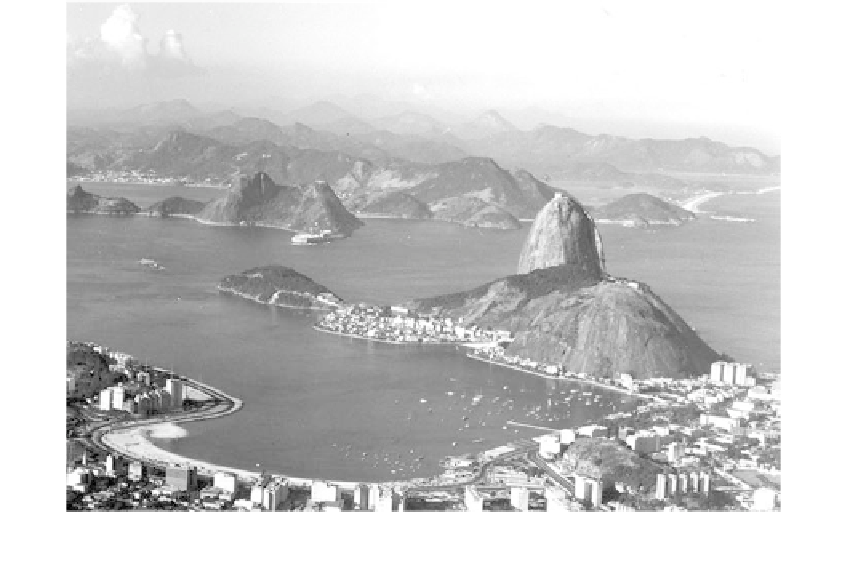Environmental Engineering Reference
In-Depth Information
Curvilinear Joints
Curvilinear joints form on the surface of granite masses due to stress relief during uplift
and the expansion of minerals (feldspar decomposing to kaolin) during weathering,
resulting in loose slabs as shown in
Figure 6.42.
The phenomenon, referred to as exfolia-
tion or sheeting, results in the formation of distinctive domes, termed inselbergs, such as
the Sugar Loaf Mountain in Rio de Janeiro (
Figure 6.43)
.
Intense Jointing
Crustal warping, faulting, or the injection of magma into adjacent bodies can break the
mass into numerous fragments of various shapes and sizes as shown in
Figure 6.44.
Uncontrolled blasting can have the same result.
Metamorphic Rocks
Systematic Orientation
In massive bodies, the system more or less follows the joint orientation of the original
igneous rock, but new joints usually form along mineral orientations to form a blocky
mass as illustrated in
Figure 6.45.
Intense Jointing
Forces as described for igneous rocks break a massive formation into numerous blocks of
various shapes and sizes.
Foliation Jointing
Jointing develops along the foliations in gneiss and schist creating a “foliate” structure as
shown in
Figure 6.46.
In the photo, the joints opened from the release of high residual
stresses, which produced large strains in the excavation walls.
FIGURE 6.43
Exfoliation of granite resulted in Sugar Loaf (Rio de Janeiro, Brazil).


